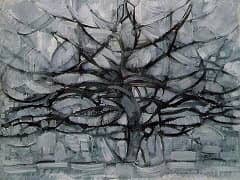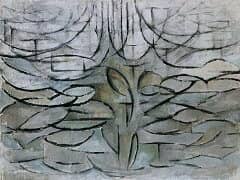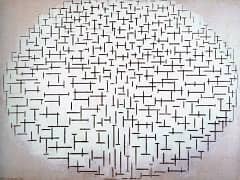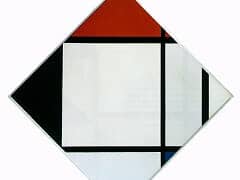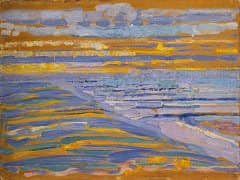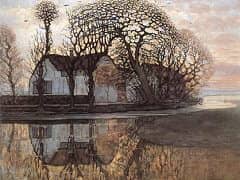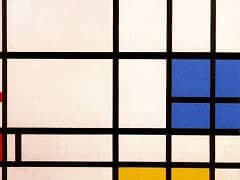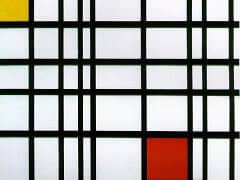The Red Mill, 1911 by Piet Mondrian
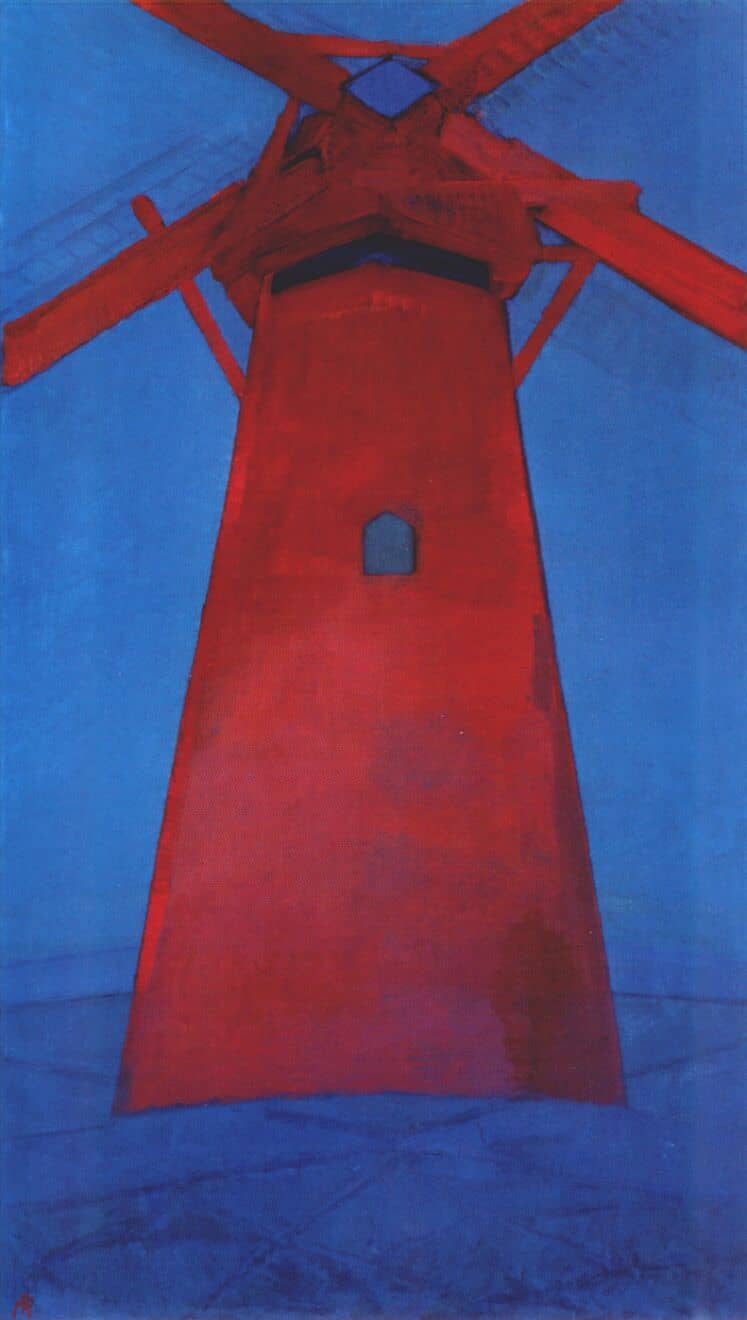
The windmill depicted in The Red Mill is of a type that seems to occur chiefly in Zeeland, thus indicating that Mondrian probably created the painting in Domburg. It terminates the evolution of one phase of his work. The painting is an excellent example of the ever-changing but always consistent treatment of a motif that runs through Mondrian's entire development.
The 1908 Windmill in Sunlight was a striking Bxample of Mondrian's transition to a luminist technique, to purer color and a new vision of nature's unity. The primary colors that completely dominate this canvas, together with the lively fauvist touch, place the Windmill in Sunlight at a nigh point of movement and stormy vitality in Mondrian's work. The slanting light falls so strongly, so plashingly, in this painting that even the fierce colors of the Red Tree or the paintings of haystacks do not equal its effect.
In the Red Mill Mondrian has an entirely different purpose in mind. He is not aiming at expressing violent movement, but rather inward-directed calm, the still solitude of man in the midst of the universe. By means of an extreme simplification of color and form he achieves a monumental quality that makes of the mill a symbol of a world view.
The symbolic content of Mondrian's mill coincides with a vision of reality in which things themselves are hardly of importance, in which mill and man are mutually interchangeable, but in which the point truly at issue is the place of the individual in the large unity. And the painting itself stands at a crucial juncture in Mondrian's development as an artist, at the end of one phase and the beginning of another. For at the very moment that the Red Mill and five other of his works appeared in the Moderne Kunstkring exhibition, Mondrian saw cubist paintings of Picasso for the first time - and the course of his life was changed.


